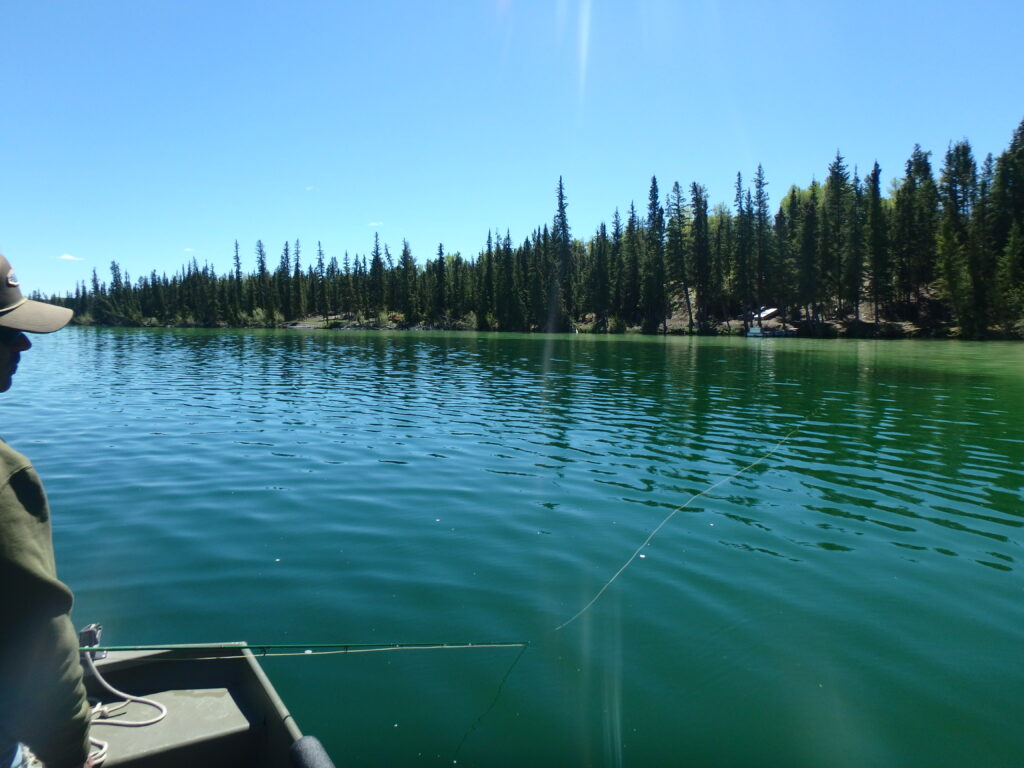Destination Reports, Expert Advice, General
Preparing for the Spring Fishing Season
With another winter quickly winding down it’s time to start turning our thoughts towards getting our fishing gear ready for another year on the water.
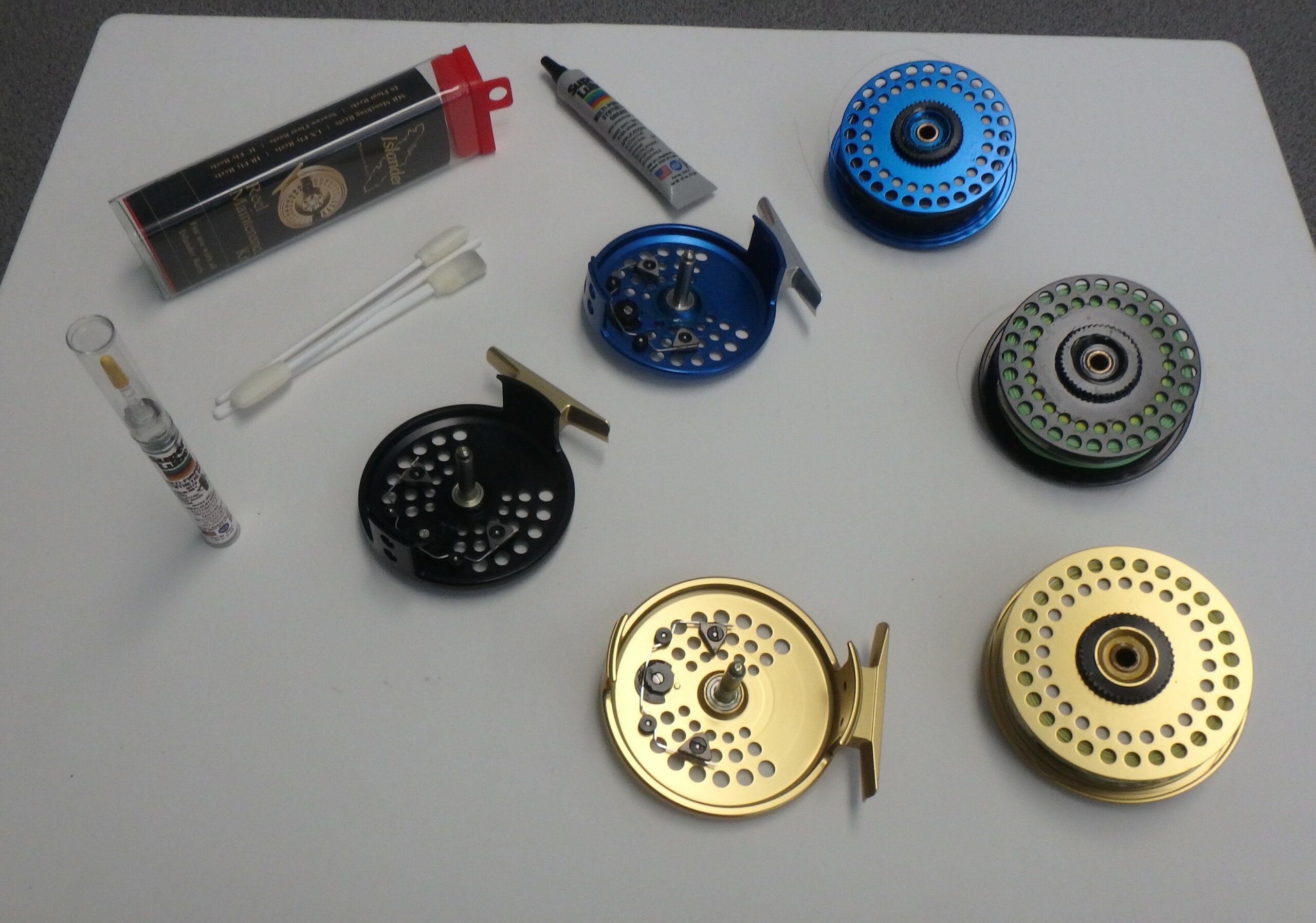
The first thing I do when preparing for the upcoming stillwater season is to select all the reels I think I will need in the season ahead. After this task is completed, I then take apart each reel and wipe out all the old grease, grit, and grime from the previous year’s use. Once they are all cleaned up, I then apply new oil and grease in the areas where it’s required. Doing regular maintenance on all your reels will help them perform at their best for decades to come.
If you’re unsure of the proper procedures for lubricating reels, you can find lots of videos online. We’ve made it easy by compiling all of our maintenance manuals [here] and our troubleshooting videos [here] on YouTube, so you’ll always have the right info at your fingertips.
As for myself, I use up to ten different rod, reel, and line combinations each year just to cover my stillwater fishing, so this task can take a few evenings to complete. But trust me, a little maintenance now will save you a headache on the water later!
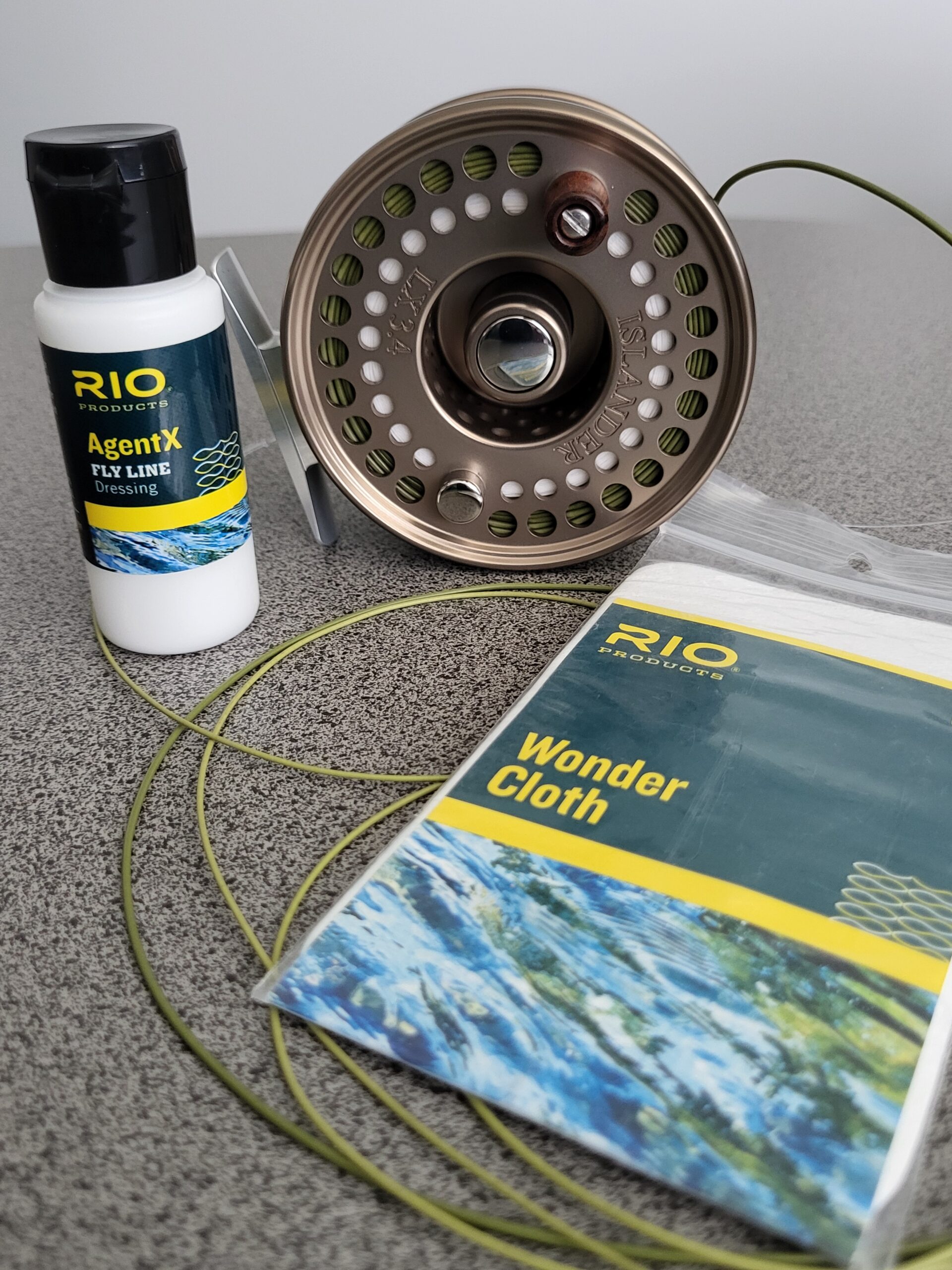
Once the reels are all cleaned and good to go then it’s time to move onto the fly lines themselves. I start by stripping the line off the reel and into a bathtub of warm soapy water. Once the line is off the reel, I start by checking the knot that connects the fly line to the backing. This knot is known to rot over time as often the line is put back on the reel wet and can take days to dry. Once the knot has been checked, I then pull the line through a wet cloth a few times to remove all contaminants off it.
The next stage is to reapply dressing onto the line. Fly line dressing is a very common product and can be purchased from any local fly shop or online. Applying the dressing is an easy process as all you need to do is put a few drops on a cloth and run the line through it while reeling the line back onto the reel. While reeling the line in, always look for any signs of cracking on the line. If the line has visible cracks, then unfortunately it will need to be replaced. When lines are properly maintained they will float higher in the water and cast better. If that is not reason enough to dress your lines, then keep this in mind they will also last much longer before needing to be replaced.
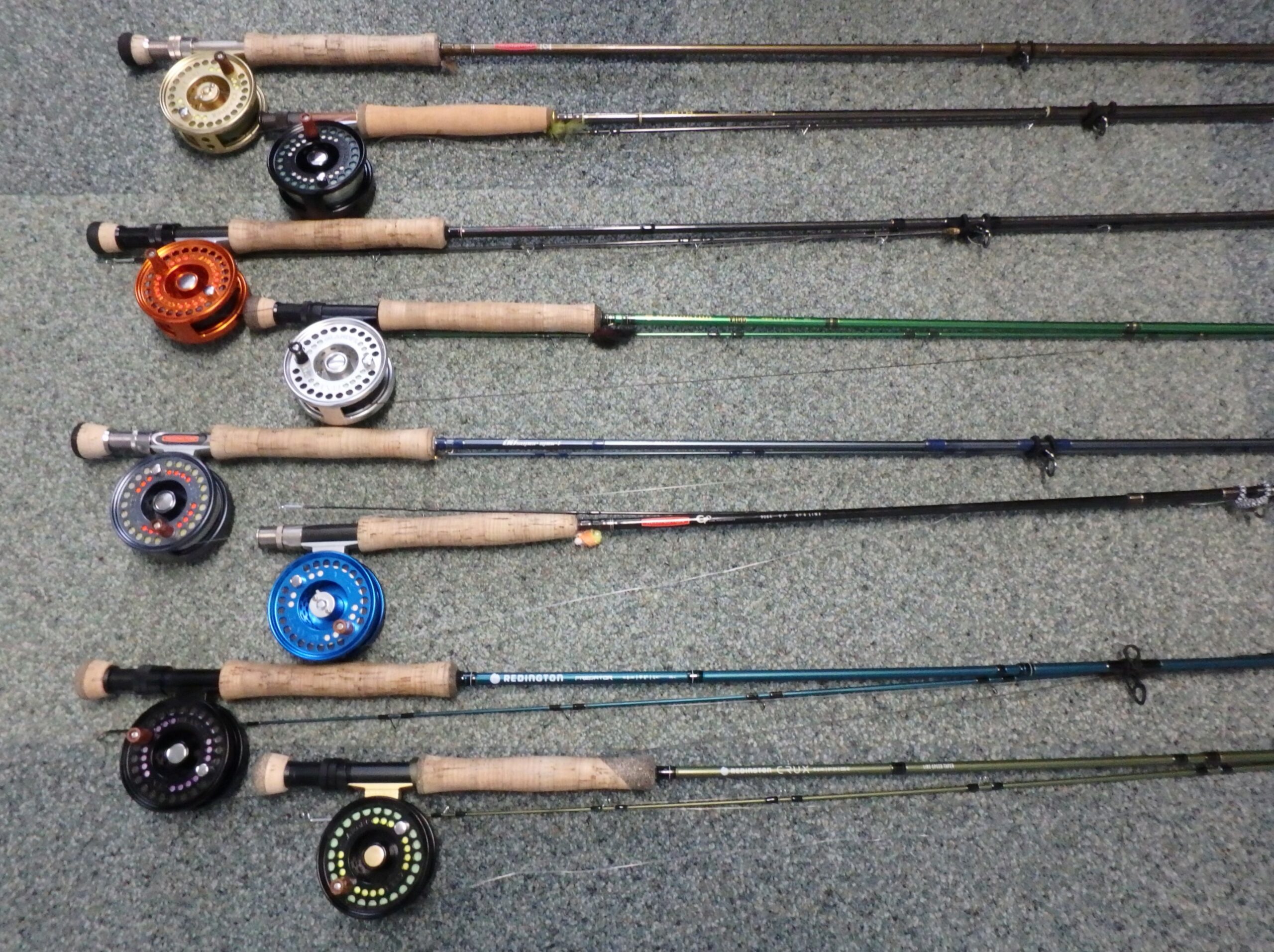
Once these two major tasks have been completed, it’s time to move onto the rods themselves. Cleaning a fly rod is much easier than a reel as all that is required is wiping them down with a wet cloth and cleaning up the cork handle. Mr. Clean sponges do an excellent job of removing dirt from the handle and the cork looks like new after a quick going over. I recommend doing this task over a sink or bathtub as it can be a little messy at times. While wiping off the rod always check the guides for wear as a worn guide will damage the fly line.
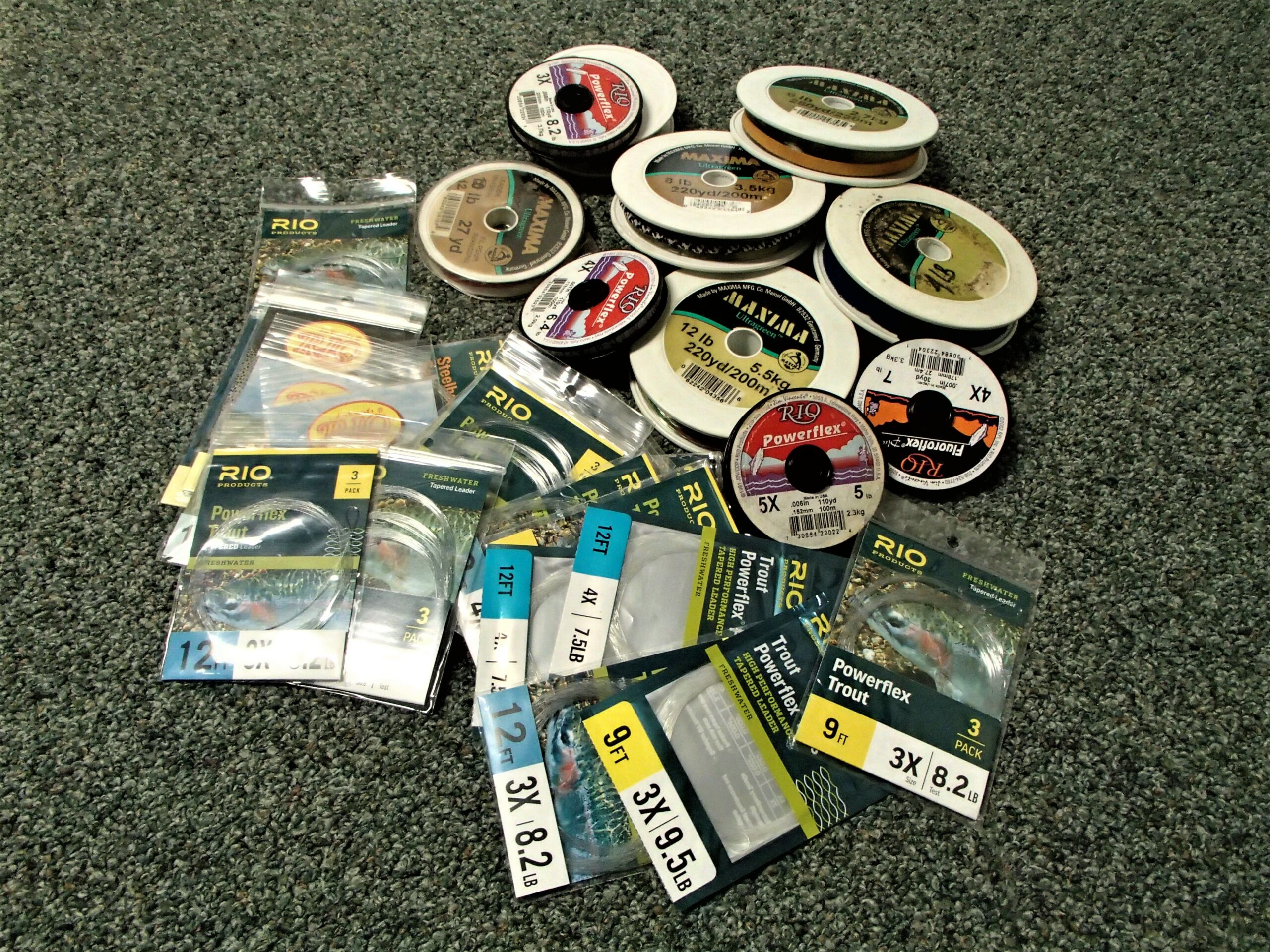
Now on to leaders, I recommend replacing your leaders every year or at least the tippet portion of the leader. If you are going to reuse them, always check them for knots and abrasion. If the leader is not totally perfect, then toss it out or replace the tippet portion. Losing a good fish due to an imperfect leader really hurts as it is a preventable issue.
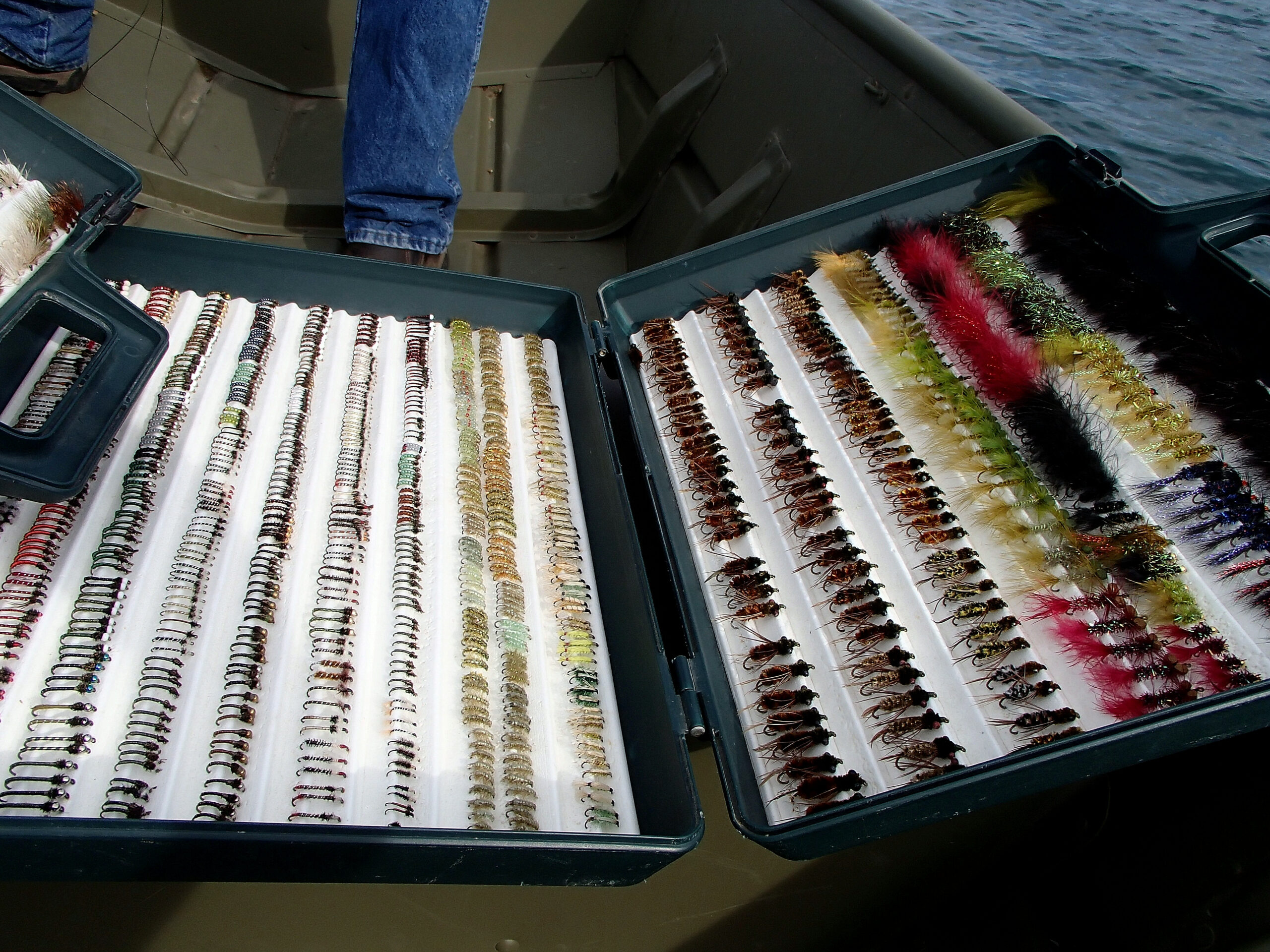
The final task is to show your fly collection some love. This is the time of year that you should go through all your stillwater boxes and organize everything according to insect type, size, and color. By doing this you will always know what your stock levels are at and what imitations need to be stocked up. Must have insect imitations for spring fishing includes dragonfly nymphs, damselfly nymphs, chironomids, blood worms, leeches, mayfly nymphs, and shrimp. Your fly boxes should always have a good selection of these insects in a variety of sizes and colors.
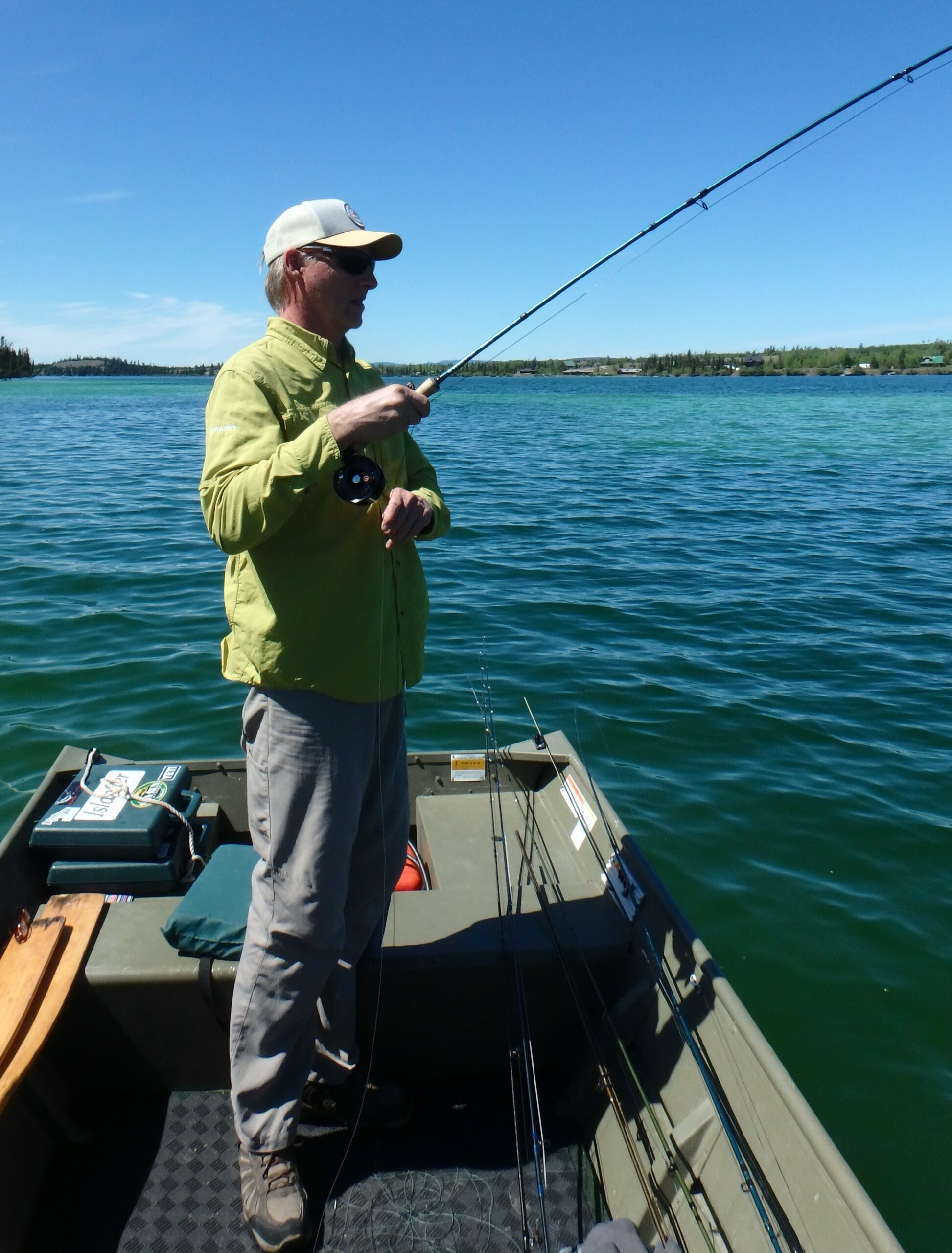
Now that your gear is all clean and maintained, it’s time to talk fishing. Elevation plays a crucial role in fishing in the early part of the year. The higher the lake, the later it becomes free of ice. When deciding on a lake to fish in the early part of the spring, select a lake between the two and three-thousand-foot level as they usually become ice free first.
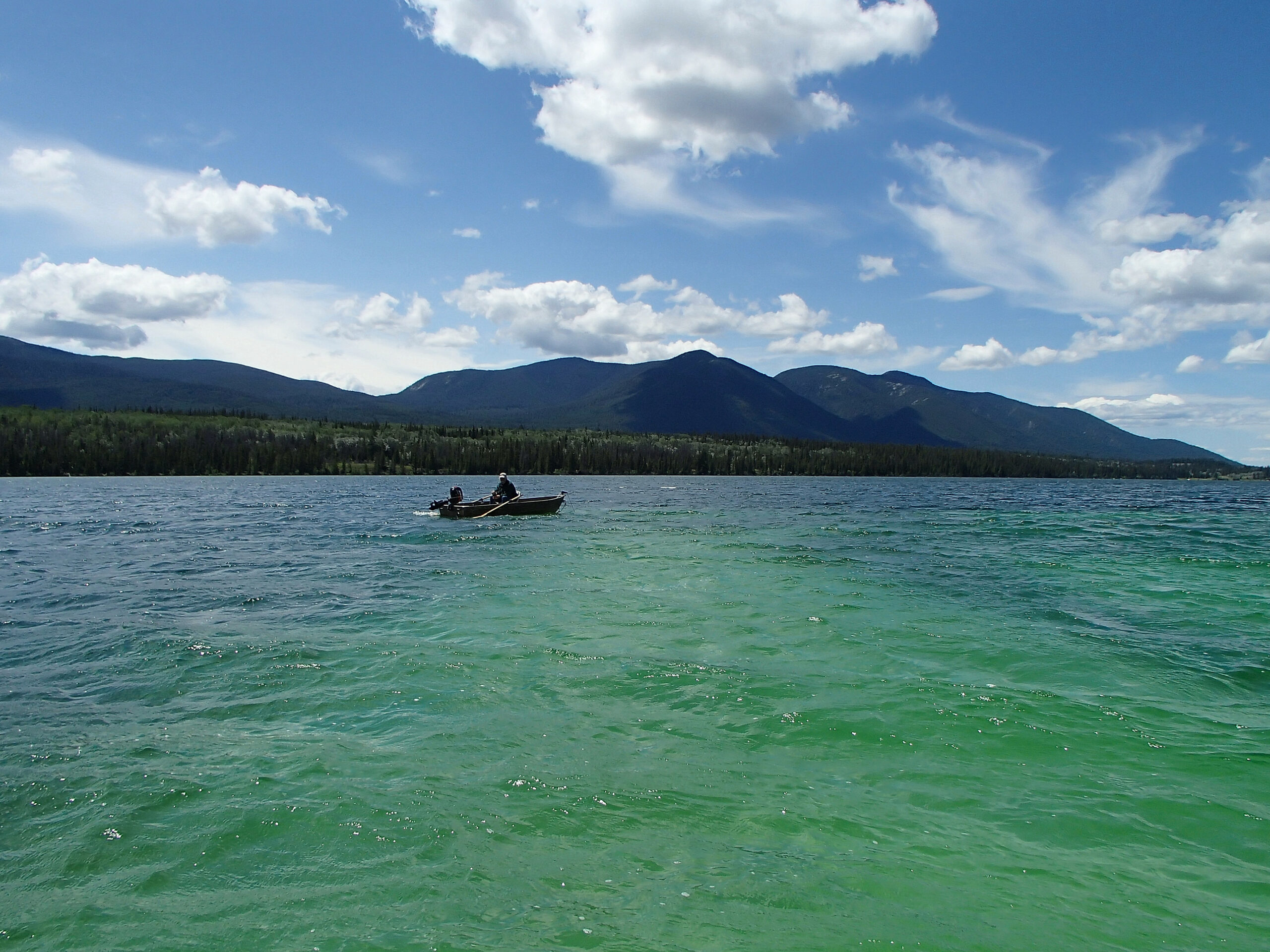
Shortly after a lake becomes ice free it will go through a major change. The cold surface water will mix with the warmer water from the bottom, causing the lake to turnover. The turnover lasts for as long as two weeks and during this time the water becomes murky, and the quality of fishing totally drops off. If you are unfortunate enough to arrive at a lake while it is in turnover, I suggest you head to another lake at a different elevation. That said, in larger lakes, various parts of the lake will turn over at different times, allowing you to fish in some parts of the lake if you don’t mind moving around.
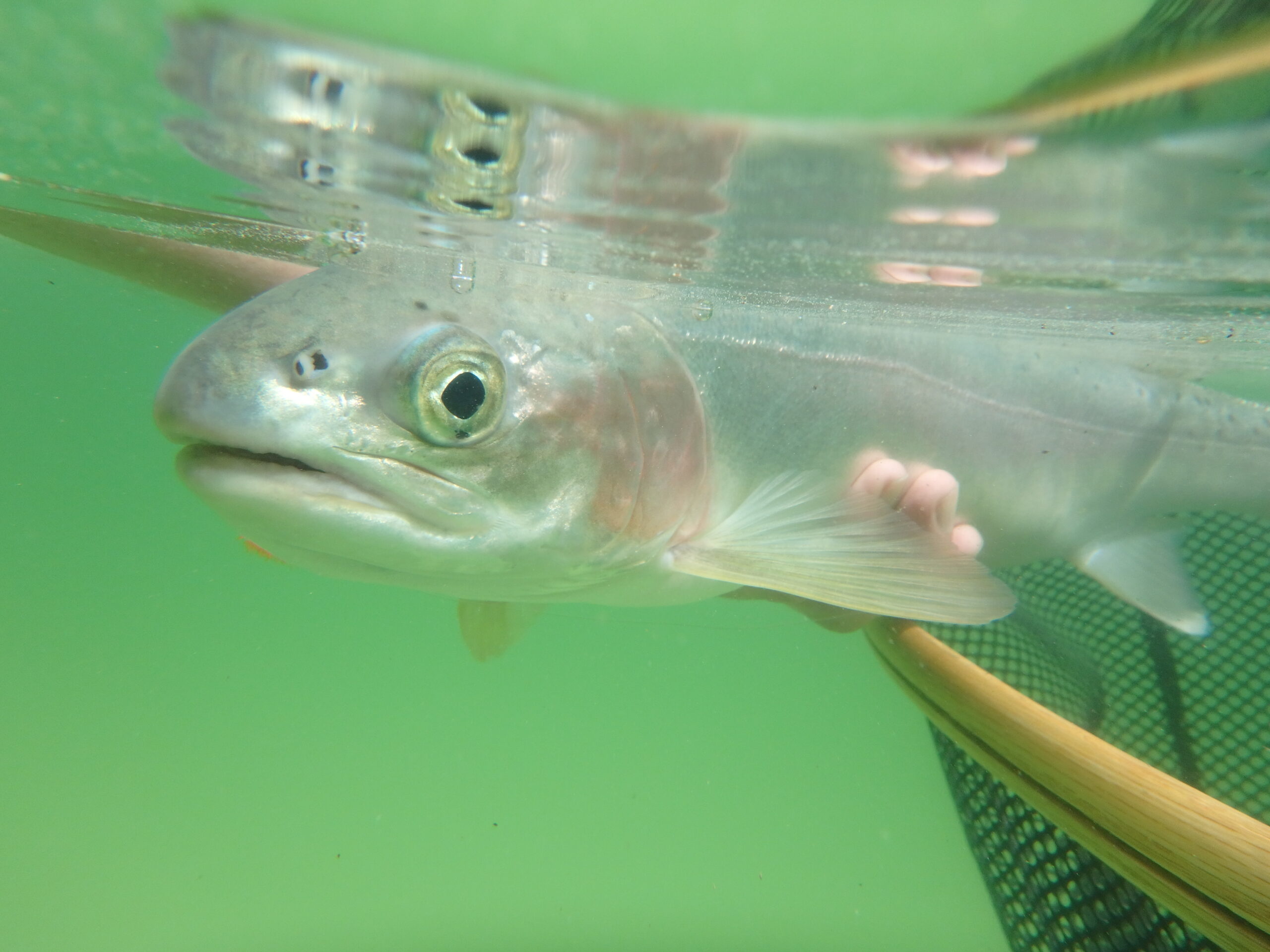
In early spring trout seldom feed before the sun slightly warms the water’s temperature. The slight temperature increase starts the insects moving and brings fish out of their dormant state. This does not mean you can’t catch fish at first light, it just might take a little more work to get a fish to commit. I have fished many lakes in the spring that were very slow before 10:00am when out of nowhere they turn on.
In the spring it can be productive to work your offerings along the edges of the shoals and drop-offs where fish search for an easy meal. Always work the shoals from the skinny water to where the shoal drops off into the deep. The area where it starts to drop off is known as the transition and this is where fish search for insects. When working your offerings along the transition don’t get discouraged if your fly drags the bottom on occasion, it just means you are covering the right depths. When searching for cruising fish on the shoals always keep in mind that trout can be quite spooky. For this reason, you should shut off your outboard motor once you are approaching the shoals and quietly search for fish with the use of an electric motor or oars.
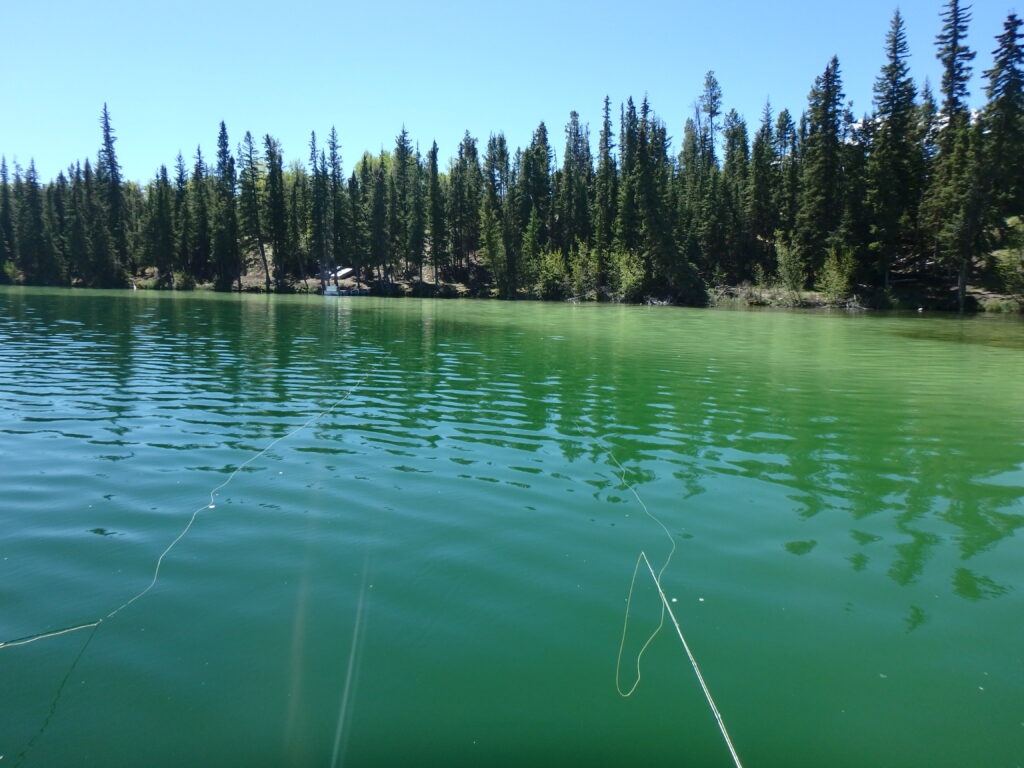
In the early part of the season, fish are commonly located holding in a specific thermocline. The thermocline is a temperature band that fish prefer to stay in during a certain time of year. This band is not only in the preferred temperature range but also holds the preferred oxygen levels for fish to survive. Sometimes this band can be in depths from 30 to 50 feet deep which makes it difficult to cover with a fly.
When covering these depths, anglers will often mooch a fly straight down which allows the imitation to remain in the zone until a fish picks it up. It takes patience to do this type of fishing as you will spend a lot of time staring at a rod in a rod holder but when everything is done correctly it can be very productive.
The most common flies for mooching are chironomids and blood worms as the natural insects are often present in these depths. When mooching a fly, a fish finder is a definite asset to help assist in locating fish. Without a fish finder the odds are stacked against you as the fish can be holding at any depth from the surface to the bottom. This is a real fun way to fish as the rod will bend right over once a fish picks up your offerings.
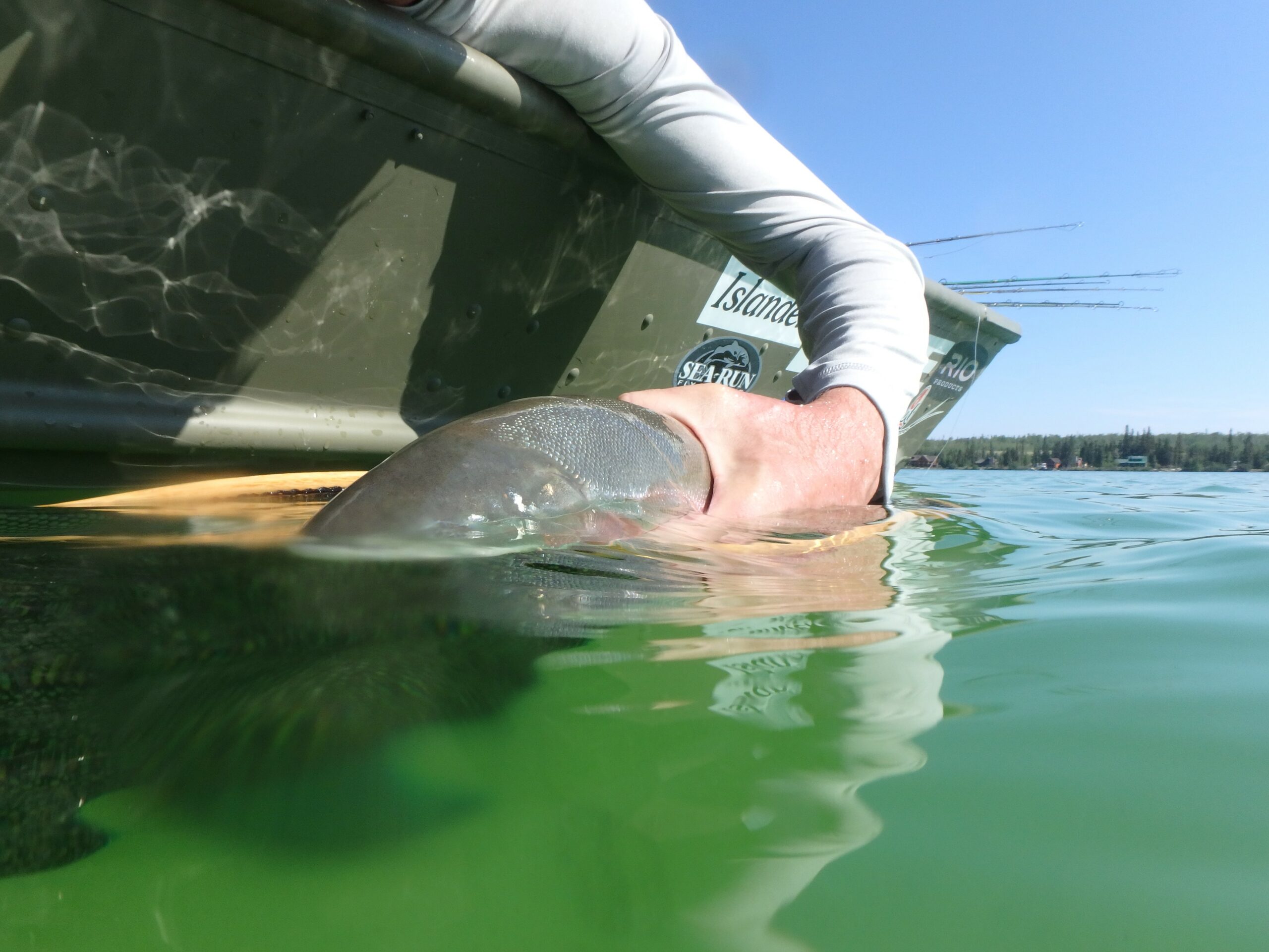
If you start now, it’s early enough to have everything prepared and ready for another exciting year on the water. We are so lucky to have such outstanding stillwater resources at our fingertips in our beautiful province. So, get out there and enjoy them.
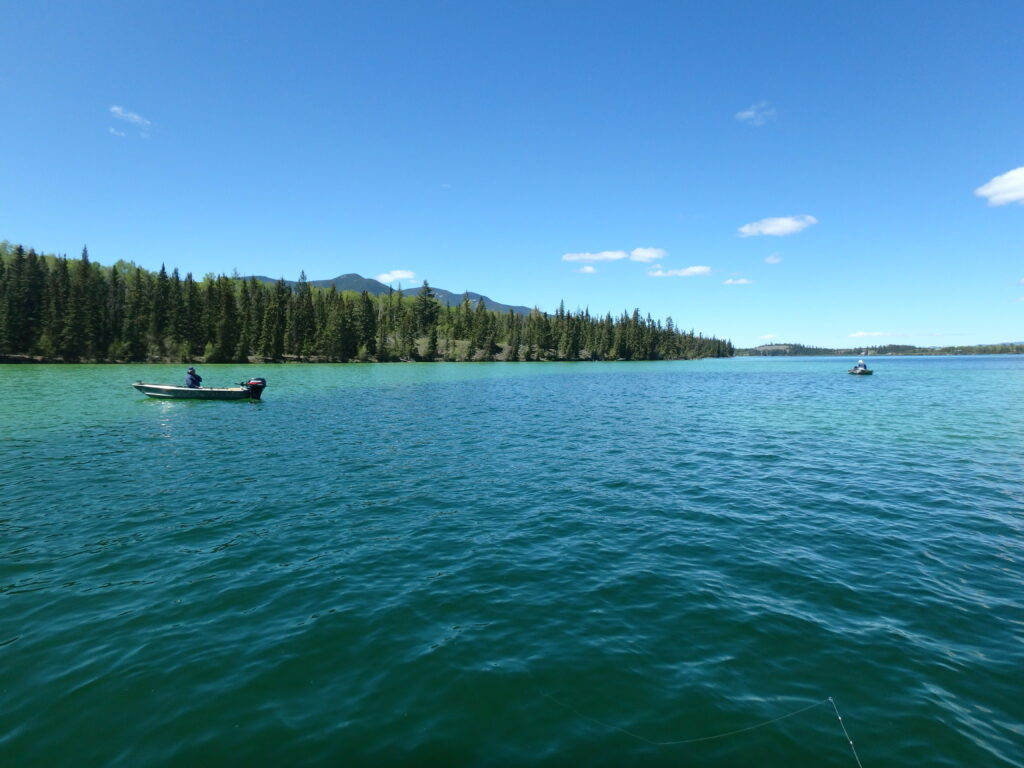
Tom Johannesen
Tom Johannesen grew up fishing but at the age of 23 he had his first article published in a British Columbia Federation of Fly Fishers (BCFFF) newsletter and something changed.
Since that first article, Tom has been on a mission to master his craft and to share what he has learned with others. With over 200 articles published in magazines like BC Sport Fishing, BC Outdoors, Outdoor Edge, Canadian Fly Fisher, Home Waters, Reel Angler, Western Angler and Island Fisherman, it’s clear that it’s a mission he takes seriously. He also regularly hosts seminars and tutorials at fly clubs and shops in the hopes of lighting that spark in the next generation.


